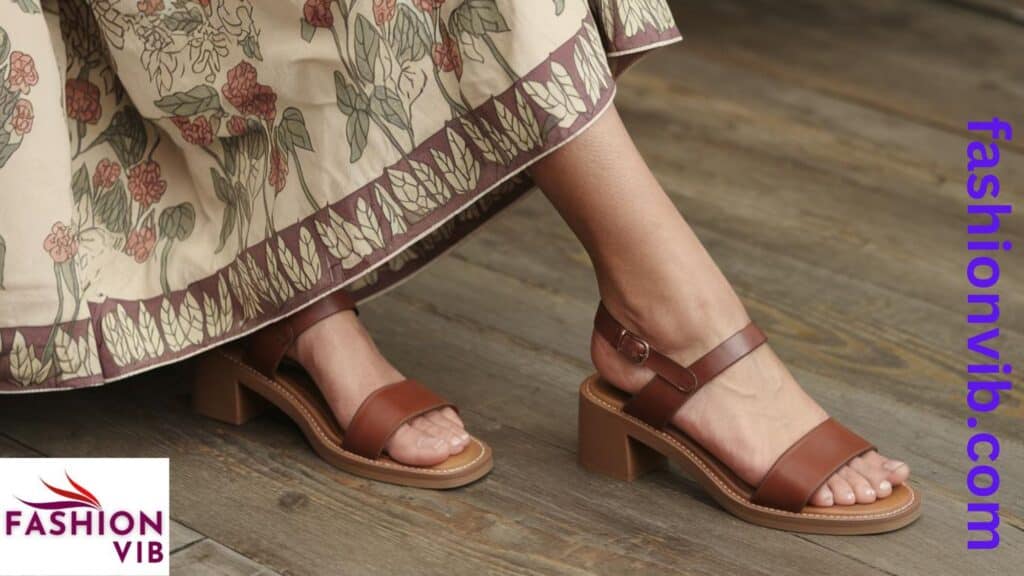Walking in high heels can be a transformative experience, boosting confidence and adding a touch of elegance to any outfit. However, for many, wearing high heels can be a challenge. This guide will help you learn how to wear heels comfortably and confidently, covering everything from choosing the right pair to mastering your stride.
Understanding Your Feet The Foundation of Heel Comfort
Before diving into the world of high heel, it’s crucial to understand the anatomy of your feet and how heel affect them. When you wear high heel, your body weight shifts forward, putting pressure on the balls of your feet and your toes.
Foot Anatomy Basics

- Arch type: High, normal, or flat
- Foot width: Narrow, medium, or wide
- Heel to toe ratio: Affects how your foot fits in different shoe styles
Understanding these factors will help you choose heels that provide a comfortable fit and reduce the risk of pain or injury.
Common Foot Issues and High Heel
Foot Issue Impact of High Heels Mitigation Strategies Bunions Can exacerbate pain Choose wider toe boxes Plantar fasciitis May increase heel pain opt for lower, chunkier heels Flat feet Can lead to over pronation Look for styles with arch support.
By being aware of your foot type and any existing issues, you can make smarter choices when selecting and wearing high heels.
Starting Small Choosing Your First Pair of Heels

For those new to wearing heels, starting with the right pair is crucial. Here’s what to consider:
Heel Height Finding Your Sweet Spot

The ideal heel height for beginners is typically between 2.3 inches. This range offers a noticeable lift without putting too much strain on your feet and legs.
- 2.inch heels: Great for everyday wear and longer periods
- 3.inch heels: Suitable for special occasions and shorter durations
- 4.inch heels and above: Best left to experienced heel wearers
Remember, you can gradually increase the heel height as you become more comfortable.
Heel Thickness Stability Matters

When learning how to walk in heel, thicker heels provide more stability:
- Block heels: Offer maximum stability and are ideal for beginners
- Wedges: Distribute weight evenly and are easier to walk in
- Kitten heels: Low height and moderate thickness, perfect for everyday wear
- Stilettos: Thin heels that require more balance and practice
As you gain confidence, you can experiment with thinner heels, but starting with a chunkier style will help you master your balance more quickly.
The Importance of Proper Fit

A comfortable fit is essential for wearing high heel without pain. Here are some tips:
- Shop for heels in the afternoon when your feet are slightly swollen
- Ensure there’s about a thumb’s width of space in the toe box
- Look for styles with ankle straps for added support
- Consider getting professionally fitted at a shoe store
“If the shoe fits, wear it. If it doesn’t, don’t force it.” Anonymous
Building Strength and Flexibility Preparing Your Feet for Heel

To get used to wearing heels, you need to strengthen the muscles in your feet, ankles, and legs. Here’s a simple workout routine to help:
- Calf raises: Stand on a step, raise your heels, hold for 5 seconds, lower. Repeat 15 times.
- Toe taps: Sitting down, tap your toes on the ground rapidly for 30 seconds.
- Ankle rotations: Draw circles with your toes, 10 clockwise and 10 counterclockwise.
- Toe spreads: Spread your toes wide, hold for 5 seconds, release. Repeat 10 times.
Perform these exercises 3. 4 times a week to improve your foot strength and flexibility.
Practicing Your Stride Walking Correctly in
Heel

Learning how to walk gracefully in heels takes practice. Follow these steps to master your stride:
- Stand tall: Keep your head up, shoulders back, and core engaged.
- Take smaller steps: Shorten your stride to maintain balance.
- Heel to toe: Place your heel down first, then roll through to your toes.
- Use your hips: Let your hips sway naturally as you walk.
Practice these techniques at home before venturing out. Start by walking on carpeted surfaces, then progress to harder floors.
Navigating Different Terrains
Surface Technique Stairs Use the balls of your feet, hold the handrail Grass Walk on your tiptoes to avoid sinking Uneven ground Take smaller steps and watch your footing
Breaking In Your Heels Comfort is Key
New heels often need some breaking in to feel confident and comfortable. Try these methods:
- Wear thick socks and walk around your home
- Use a hairdryer to gently heat and stretch tight areas
- Apply moleskin or gel inserts to potential blister spots
- Consider professional stretching services for leather shoes
Remember, if a pair of heels causes significant pain even after breaking in, it’s better to let them go. Your comfort and foot health should always come first.
Gradual Exposure Building Your Heel Endurance

To get used to wearing heels for longer periods, create a “heel schedule”:
- Week 1: Wear 2 inch heel for 1 hour daily
- Week 2: Increase to 2 hours daily
- Week 3: Try 3 inch heels for 1 hour daily
- Week 4: Alternate between 2 inch and 3 inch heel throughout the week
Gradually increase your time in heels each week. Listen to your body and take breaks when needed.
Case Study Sarah’s Heel Journey

Sarah, a 28 years old office worker, wanted to wear heels more often but struggled with discomfort. She followed this gradual exposure plan:
- Started with 2 inch block heels for 1 hour daily during her commute
- Increased wear time by 15 minutes each week
- After 2 months, she could comfortably wear 3 inch heels for her entire workday
Sarah’s success came from consistent practice and listening to her body’s limits.
Maintenance and Care Prolonging the Life of Your Heel

Proper care can extend the life of your heel and ensure they remain comfortable:
- Storage: Use shoe trees or stuff with paper to maintain shape
- Cleaning: Wipe down after each wear, polish leather regularly
- Repairs: Replace heel tips and soles as soon as they show wear
- Rotation: Avoid wearing the same pair two days in a row
Investing time in shoe care will save you money and ensure your favorite heels stay comfortable for longer.
Dealing with Pain and Discomfort Quick Fixes and Long Term Solutions

Even with practice, you may encounter some discomfort when wearing high heels. Here are some solutions:
Quick Fixes
- Blisters: Apply moleskin or blister bandages
- Ball of foot pain: Use gel inserts or metatarsal pads
- Heel slippage: Insert heel grips or use double sided tape
Long Term Solutions
- Stretching: Regular foot and calf stretches can reduce pain
- Massage: Use a tennis ball to roll out foot muscles
- Foot exercises: Strengthen your feet with targeted exercises
If pain persists, consult a podiatrist. They can provide custom orthotics or advice tailored to your feet.
Advanced Tips Taking Your Heel Game to the Next Level
Once you’ve mastered the basics, try these advanced techniques:
- Mix heel heights: Alternate between different heights to work different muscle groups
- Custom insoles: Invest in high quality, custom made insoles for maximum comfort
- Posture training: Practice good posture to reduce strain on your feet and back
Remember, even experienced heel wearers have their limits. It’s okay to bring a pair of flats for backup on long days.
Conclusion
Learning how to wear heels is a journey that requires patience and practice. By understanding your feet, choosing the right shoes, and building strength and technique, you can feel confident and comfortable in heel of any height.
Remember these key points:
- Start with lower, thicker heel and gradually increase height
- Focus on proper fit and comfort over trends
- Practice your walk and build endurance gradually
- Take care of your feet and your shoes
With these tips, you’ll be strutting confidently in your favorite heels
in no time. Embrace the elegance and empowerment that comes with mastering the art of walking in high heels, and let your personal style shine through.

James is a seasoned fashion blogger with over a decade of experience in the industry. His keen eye for trends and insightful commentary make him a trusted voice in fashion. Passionate about style evolution, James combines his extensive knowledge with a unique perspective, offering readers fresh and engaging content. Follow his journey as he navigates the ever-changing world of fashion on Fashion Vib.







